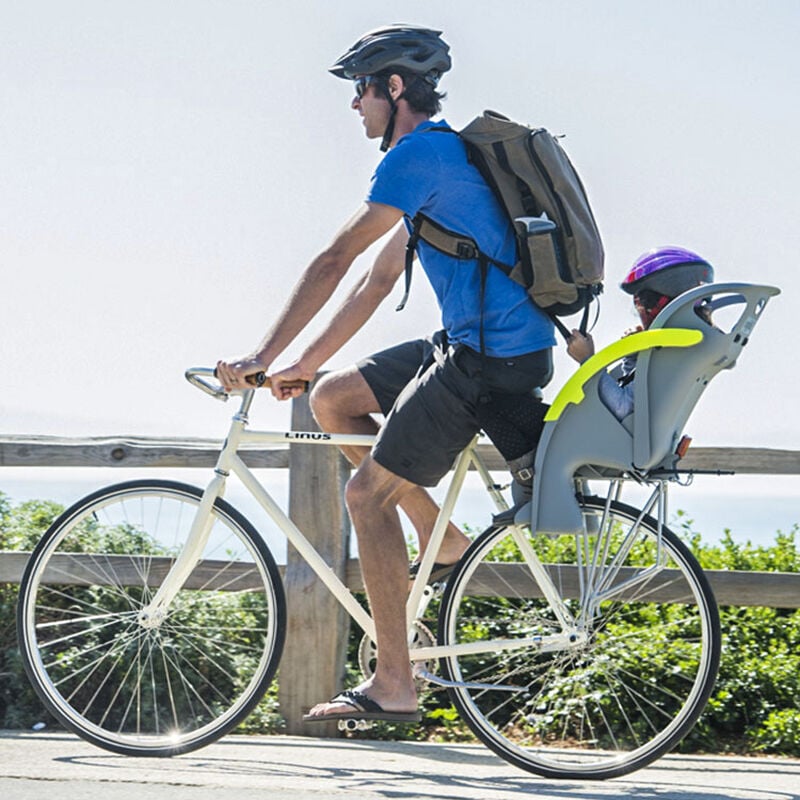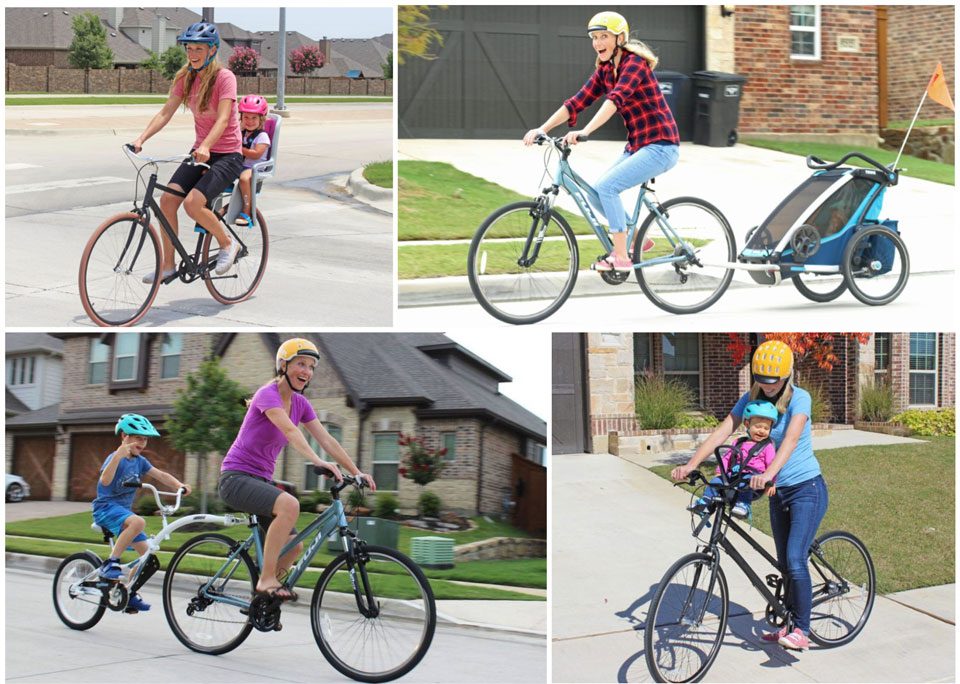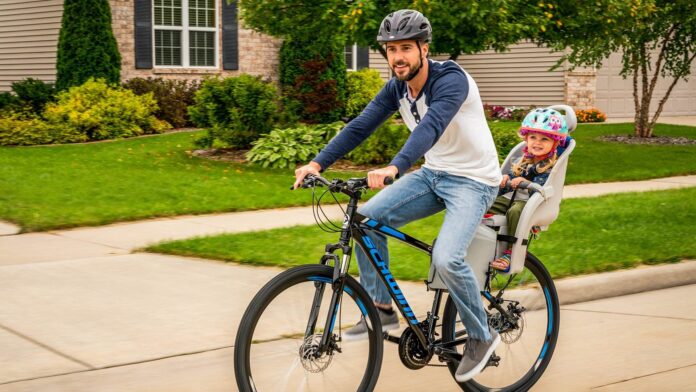Looking for a Bike Child Carrier in Austin, Texas, United States? Find available options and deals below.
Bell Cocoon Bicycle Child Carrier for $49. 99, WORAMUK Kid’s Bike seat Rear Child Carrier for $61. 80, and more. Popular brands like Thule and Schwinn offer various models suited for different age ranges. Facilitate safe and enjoyable rides with your little ones with these top-rated child carriers.
Discover the perfect fit for your biking adventures and ensure comfort and security for your child on the go. Choose from a variety of front or rear-mounted carriers designed for children of different age groups. Enhance your biking experience with a reliable and sturdy child carrier that meets your specific needs.
Types Of Bike Child Carriers
When it comes to biking with your little one, finding the right bike child carrier is crucial. There are several types of bike child carriers available, each with its own set of benefits and features. Let’s take a look at the different types of bike child carriers, including front-mounted bike seats, rear-mounted bike seats, and rack-mounted bike seats.
Front-mounted Bike Seats
A front-mounted bike seat is designed to attach to the front of the bike, allowing your child to sit between your arms as you ride. This type of carrier provides a close and interactive experience for both you and your child. It allows for easy communication and bonding during the ride. Front-mounted bike seats are suitable for younger children who need close supervision.
Rear-mounted Bike Seats
Rear-mounted bike seats are attached to the back of the bike, behind the rider’s seat. This type of carrier provides a comfortable and secure perch for your child, with a backrest and often adjustable harnesses to keep them safe. Rear-mounted bike seats are suitable for older children who can sit upright and hold onto the handlebars, providing a clear view of the surroundings.
Rack-mounted Bike Seats
Rack-mounted bike seats are designed to be installed on a bike rack over the rear wheel. These carriers offer a stable and sturdy platform for your child to sit on, ensuring a smooth and enjoyable ride. They often come with adjustable footrests and harnesses for added safety. Rack-mounted bike seats are suitable for longer rides and can accommodate slightly older children.

Credit: www.copilotgear.com
Important Features To Consider
Consider crucial factors such as safety, weight limit, comfort, and installation ease when selecting a bike child carrier. Inspect harness quality and adjustable features before purchasing. Ensure proper support and compatibility with your bike model for a secure and enjoyable ride.
Safety Harness And Restraints
When choosing a bike child carrier, safety harness and restraints are vital for securing your child during the ride. Look for carriers with adjustable straps and secure buckles to ensure your child’s safety.
Adjustability And Compatibility
Consider the adjustability and compatibility of the carrier with your bike. Ensure it fits securely and can be easily adjusted to accommodate your child’s size and comfort.
Comfort For The Child
Comfort is key for your child’s enjoyment on the bike ride. Choose a carrier with padded seating, adjustable footrests, and ample head support to keep your little one cozy throughout the journey.
Choosing The Right Bike Child Carrier
When it comes to biking with your child, safety and comfort are of the utmost importance. This is why choosing the right bike child carrier is essential. With so many options available in the market, it can be overwhelming to make a decision. In this guide, we will explore the key factors to consider to help you choose the perfect bike child carrier for your needs.
Age And Weight Limits
Before you start browsing different bike child carriers, it’s crucial to know the age and weight limits that each carrier can accommodate. Child carriers generally have specific guidelines provided by the manufacturer to ensure optimal safety and proper fit. Make sure to check these guidelines and select a carrier that is suitable for your child’s age and weight. Keeping your child within the recommended limits will guarantee a secure and comfortable ride.
Riding Style And Terrain Considerations
Consider your riding style and the terrain you typically encounter during your bike rides. Different carriers are designed for specific riding styles and terrains. For example, if you enjoy off-road biking or mountain biking, you might want to opt for a carrier that offers extra durability and shock absorption. Likewise, if you primarily ride on paved roads or cycle paths, a carrier with smooth suspension and comfortable seating might be more suitable. Understanding your riding style and terrain will help you choose a carrier that can handle the demands of your adventures.
Budget And Value For Money
Finally, your budget and value for money are significant factors to consider when selecting a bike child carrier. While it’s tempting to go for the cheapest option available, it’s important to prioritize safety and quality. Look for carriers that offer a balance between affordability and durability. Consider the materials used, the overall design, and any additional features that enhance safety and convenience. Investing in a high-quality carrier that meets your requirements will provide peace of mind and ensure a positive biking experience for both you and your child.
To summarize, choosing the right bike child carrier involves considering age and weight limits, riding style and terrain considerations, as well as budget and value for money. By taking these factors into account, you can make an informed decision and find a carrier that offers optimal safety, comfort, and enjoyment for both you and your little one.
Safety Guidelines And Precautions
Ensure the safety of your child while using a bike child carrier with these essential guidelines. Follow these tips to keep your child secure and protected during bike rides.
Proper Helmet Use
When using a bike child carrier, it’s essential to ensure that your child wears a properly fitted and securely fastened helmet at all times. The helmet should meet safety standards and provide adequate protection for your child’s head. Make sure to check and adjust the helmet regularly to ensure a snug and comfortable fit.
Balancing The Bike With A Child Carrier
Before riding with a bike child carrier, ensure that the bike is properly balanced to accommodate the additional weight. Distribute the weight evenly to maintain stability and control while riding. Always test the bike’s balance and handling with the child carrier before taking it on the road.
Traffic And Road Safety
When riding with a bike child carrier, prioritize visibility and awareness of your surroundings. Choose safe and designated routes for cycling, avoiding heavily trafficked roads whenever possible. Obey all traffic laws and signals, and use hand signals to communicate your intentions to other road users.
Maintain a safe distance from vehicles and other cyclists. In addition, be mindful of potential obstacles and hazards on the road, such as potholes, debris, and uneven surfaces. Always anticipate potential risks and ride defensively to ensure the safety of both you and your child.
By following these safety guidelines and precautions, you can enjoy the experience of cycling with your child in a bike child carrier while prioritizing their safety and well-being.
Tips For Riding With A Bike Child Carrier
Traveling with your child on a biking adventure can be an enjoyable and memorable experience. When it comes to riding with a bike child carrier, safety and communication play a crucial role. Here are some essential tips to make your bike ride with your child a smooth and fun experience.
Practicing With An Empty Carrier
Before taking your child along for the ride, it’s crucial to get comfortable with the added weight and balance of a bike child carrier. Practice riding with an empty carrier attached to your bike to get a feel for the handling and maneuverability. This will help you adjust to the extra weight and ensure a stable ride when your child is onboard.
Communicating With Your Child
Clear communication is key when riding with a bike child carrier. Ensure your child understands basic instructions, such as when to hold on and when it’s safe to dismount. Maintain constant communication with your child during the ride, providing reassurance and instructions as needed.
Choosing Suitable Cycling Routes
When planning your biking route with a child carrier, opt for smooth, well-paved paths with minimal traffic. Avoid routes with steep inclines or challenging terrain, and prioritize safety at all times. Consider family-friendly cycling trails or dedicated bike paths for a more relaxed and enjoyable ride for both you and your child.

Credit: www.amazon.com

Credit: www.twowheelingtots.com
Frequently Asked Questions
What Age Can A Baby Go In A Bike Carrier?
Babies can go in a bike carrier once they have enough neck and head control, usually around 9-12 months old.
What Age Can Babies Go In Bike Seats?
Babies can go in bike seats typically at around 9 to 12 months old.
Can A 4 Year Old Go In A Bike Seat?
Yes, a 4-year-old can go in a bike seat designed for their age and weight. Be sure to follow the safety guidelines provided by the manufacturer.
Can I Ride A Bike With A Baby Carrier?
Yes, you can ride a bike with a baby carrier designed for cycling with your baby.
Conclusion
When choosing a bike child carrier, safety and comfort are key considerations. Explore different options to find the best fit for your family’s needs and enjoy riding together. Invest in a quality child carrier to create lasting memories and adventures on the go.




